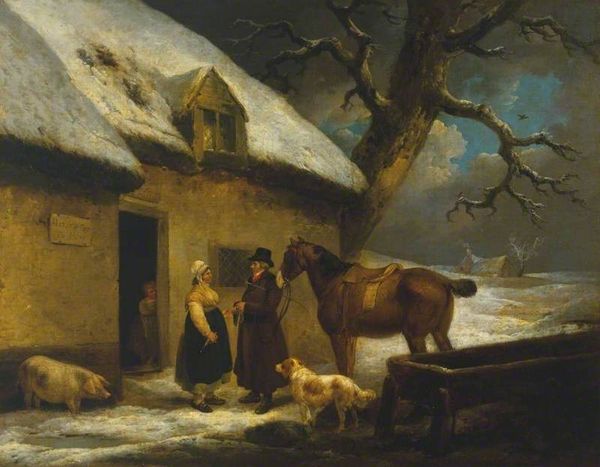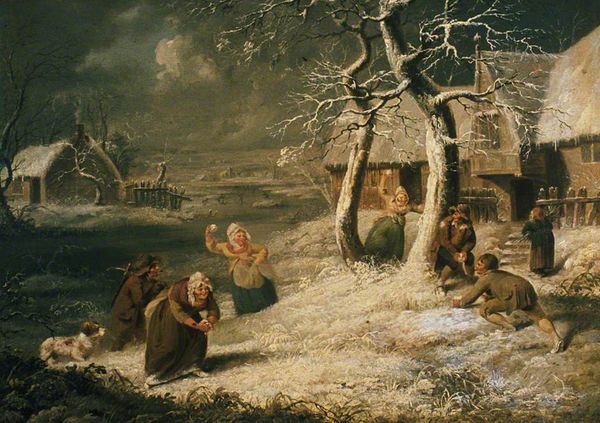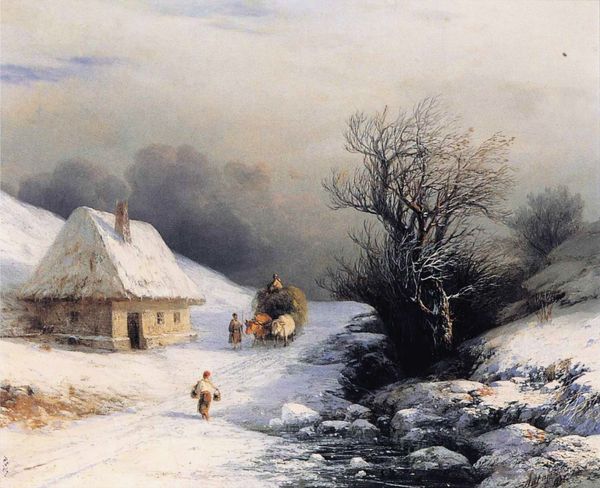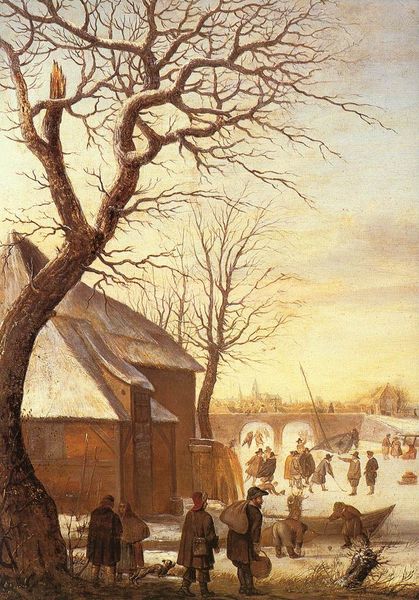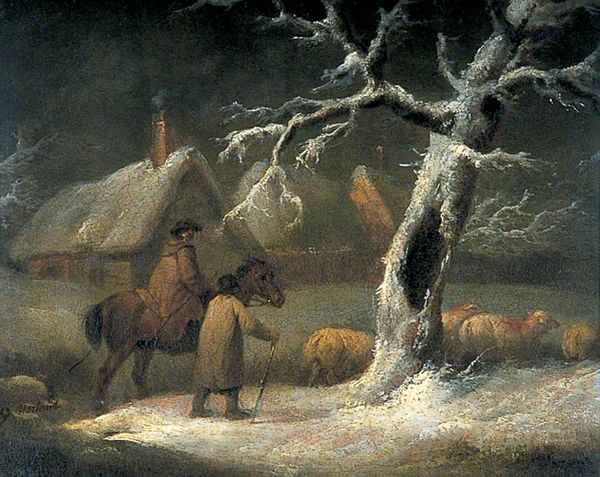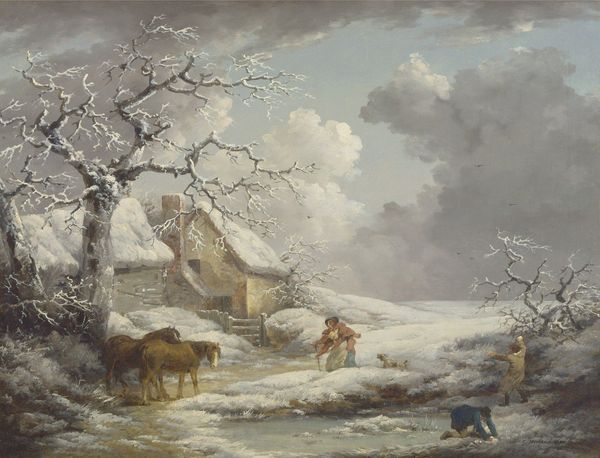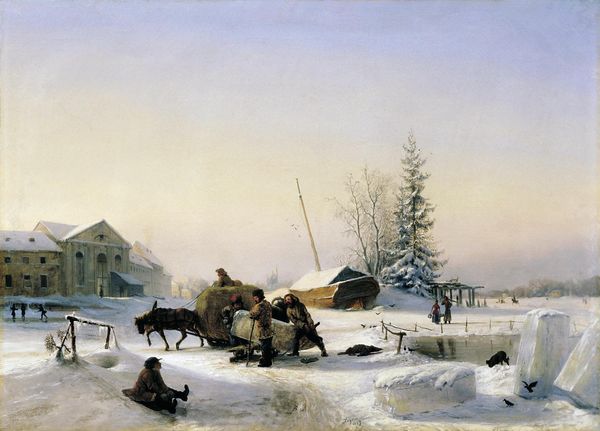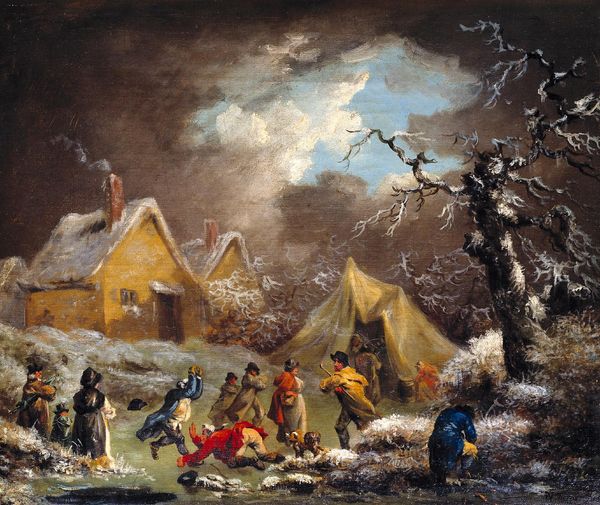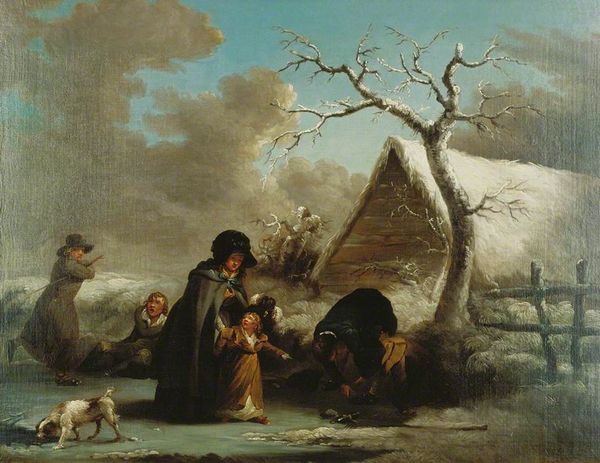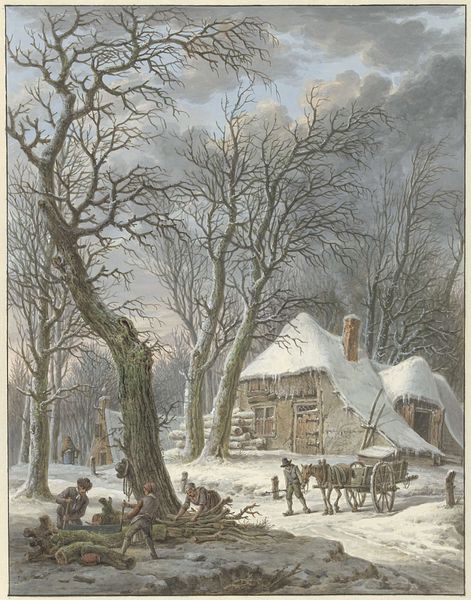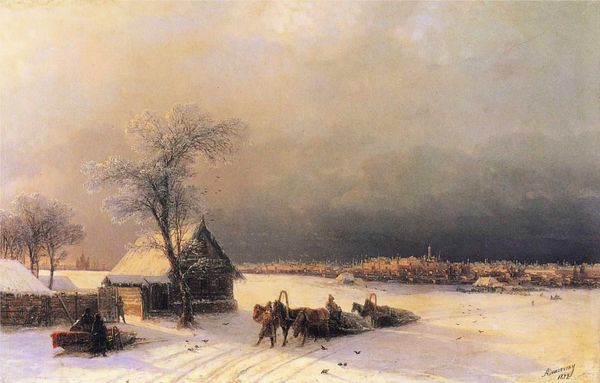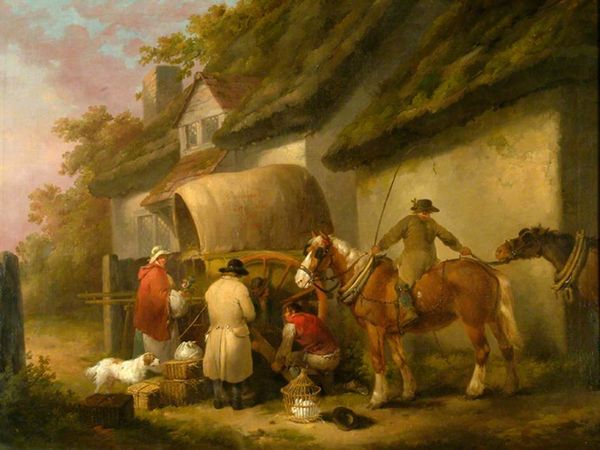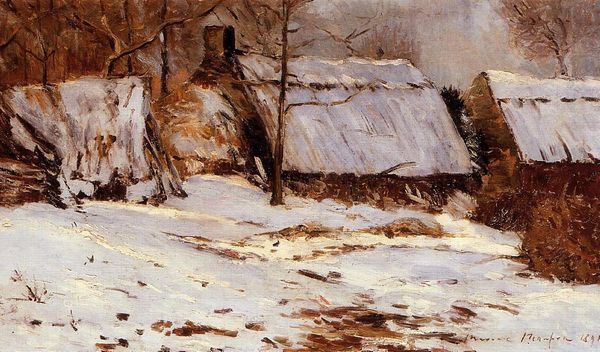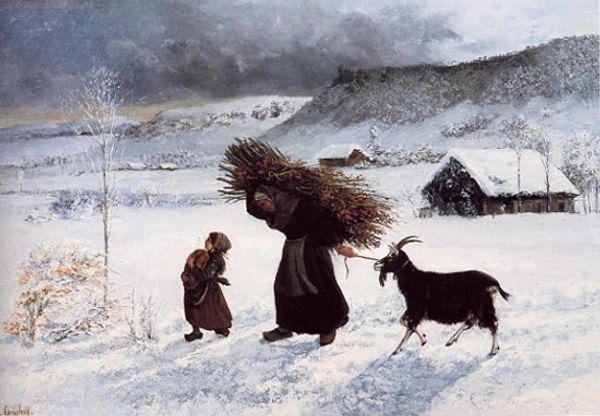
painting, oil-paint
#
narrative-art
#
painting
#
oil-paint
#
landscape
#
oil painting
#
romanticism
#
genre-painting
#
realism
Copyright: Public domain
Curator: "Breaking the Ice," created by George Morland in 1792, depicts a winter scene of a family collecting water. Editor: It feels incredibly bleak, doesn’t it? A raw, immediate sense of the struggle for survival. The color palette itself is almost entirely desaturated, dominated by whites, greys, and browns that really enhance that mood. Curator: Let's think about the physical properties that communicate that struggle, then. Notice the artist’s hand here; the paint is applied with visible brushstrokes. How Morland built the surface captures a lived environment and the labor inherent in it. We see it most readily in the rendering of snow and the rustic architecture that provides minimal shelter. Editor: Absolutely, and those stark contrasts highlight the precariousness of their situation. The family isn't just facing environmental hardships; they're entrenched in a specific socio-economic struggle for resources. Notice how the family has been coded here by age and even by class. Curator: Precisely! Morland here invites us to consider art as part of the labor of culture production and material necessity. Consider, too, that pigments are mined, extracted, processed, traded. Who had access to them? How does it relate to class and power? Editor: Which forces us to remember that what we see—a seemingly simple scene of rural life—is not neutral. It’s filtered through Morland's own position and his interpretation of those relationships and power dynamics. How complicit is he in glamorizing their poverty and is this a romanticization? Curator: Those questions open up a space for further examination into patronage and how market forces dictated artistic production in Morland’s time. The piece offers so much: a material record of production tied into a moment of labor and broader issues of access. Editor: Yes, and looking at it today, we’re also prompted to consider who gets to define ‘landscape’ or ‘genre’ painting when these scenes inherently reflect and shape social inequalities. "Breaking the Ice" makes visible some of the ways those concepts have historically functioned. Curator: I agree. Considering those concepts opens up new ways of interrogating materials and methods themselves, leading us beyond conventional interpretations. Editor: Exactly. What initially reads as just a slice of 18th-century life, evolves into something far more resonant about human agency within social structures.
Comments
No comments
Be the first to comment and join the conversation on the ultimate creative platform.
